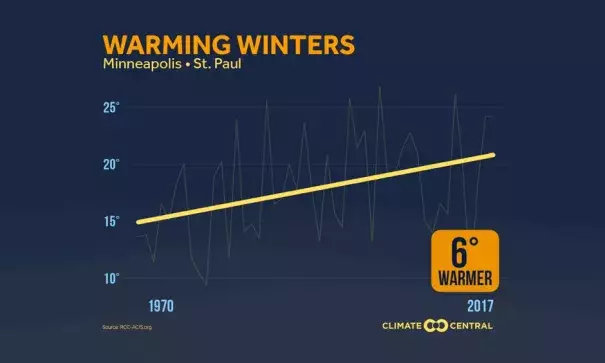Graphs: See How Much Winters Have Been Warming in Your City

Winters are warming across the U.S., and in some locations, the warming is dramatic. The Northern Plains, Great Lakes, and the Northeast are warming the fastest, while warming is taking place at a slower rate in the western U.S.
In parts of Minnesota, Wisconsin, and northern New England winters have warmed at an average rate of more than 1°F per decade since 1970 — that’s more than 4°F total. The five locations with winter average temperatures warming the most are:
Burlington, Vermont 7.0°F
Mankato, Minnesota 6.0°F
Minneapolis, Minnesota 6.0°F
Fargo, North Dakota 5.9°F
Waterloo, Iowa 5.9°F
...
Warming winters may sound nice to some who prefer more moderate temperatures, but milder winters can signal more difficult times for industries that economically depend on cold winters. Tourism and recreation may suffer when mild conditions negatively affect skiing, snowmobiling and ice fishing. In the West, the warmer winters can lead to faster snow melting and less snowpack, which can stress water levels in reservoirs for areas that depend on melting snowpack later in the year for both drinking and agriculture. Plus, it can lead to drier vegetation and soils, raising the risk of wildfires. Warming winters also serve as a reminder that hotter spells are becoming more frequent and more intense when summers return.


